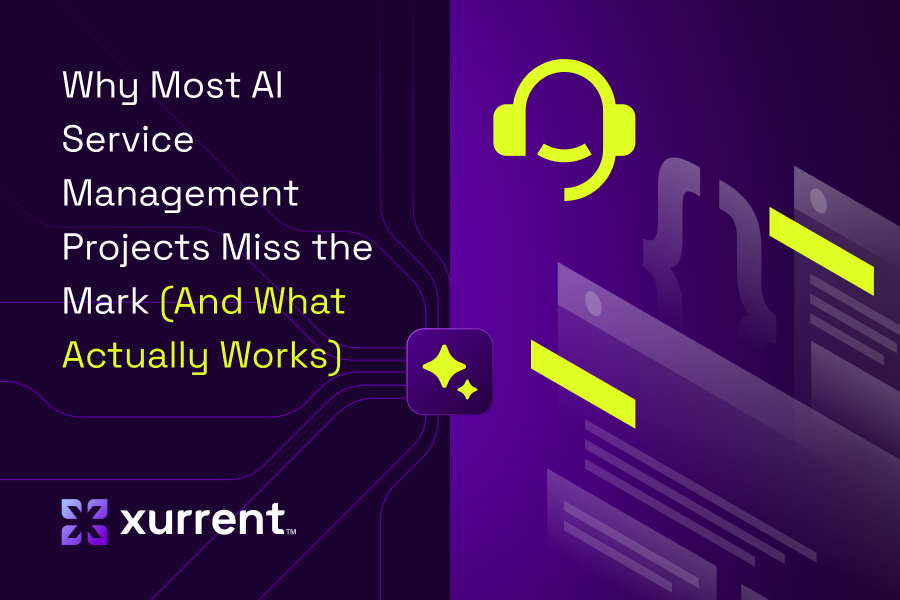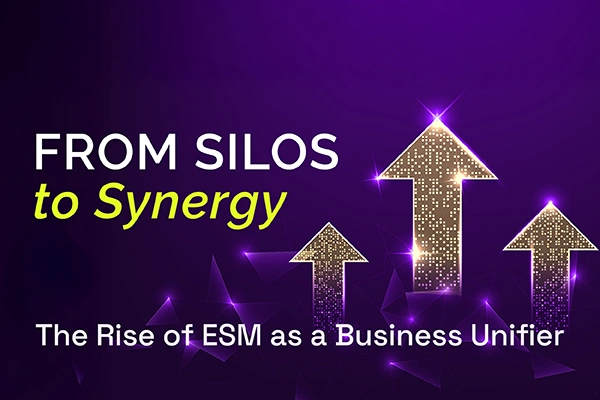Breaking free from the IT-centric service management bottleneck that's killing company productivity
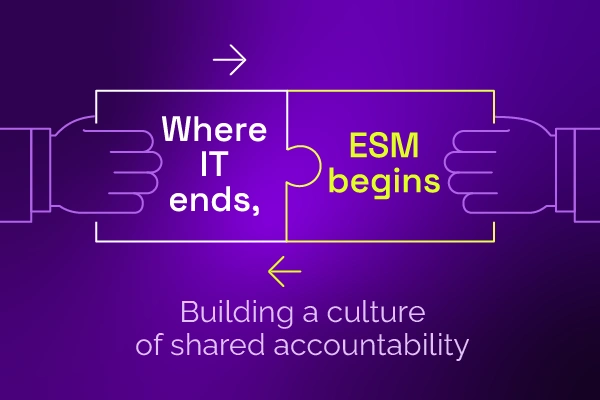
A few all-too-common IT-related business scenarios:
>> Your team is in the midst of a critical product launch, and the CRM crashes.
>> 20 new hires are starting this week, and the onboarding platform bonks out.
>> It's vendor payday, but the approval workflow system breaks.
In most organizations, these scenarios have one thing in common — they immediately become "IT's problem," landing squarely on the help desk to diagnose and resolve ... quickly. See: 🔥alarm.
The traditional model of IT as the catch-all for every tech-related hiccup (or major issue) has created organizational bottlenecks that no amount of staffing can solve.
The answer: Enterprise Service Management (ESM), which fundamentally changes the dynamic by establishing shared accountability across departments.
ESM extends the principles and practices of IT Service Management (ITSM) beyond the IT department to other areas of the organization. It aims to improve service delivery across the entire enterprise by applying a service-oriented approach to various business functions.
But how do we get from "It's IT's problem" to “ESM as the answer?” How do we build a culture of shared accountability?
Before we answer these questions, let's take a brief look back at how we got here.
The problem with IT-centric service management
The problem with IT-centric service management is that everything becomes an "IT problem." And when everything is an IT problem, IT teams become overwhelmed with non-IT service requests. And overwhelmed teams lead to a culture of finger-pointing and departmental silos.
See where this is going?
IT-centric service management is not a good place to be in — from an organizational (financial) standpoint, a team morale (and productivity) perspective, or through a customer (slow resolution times) lens.
Some examples:
- HR blaming IT for onboarding delays when the real issue is process design
- Finance routing expense system issues to IT instead of owning workflow optimization
- Marketing treating every automation failure as a technical problem rather than examining the business logic
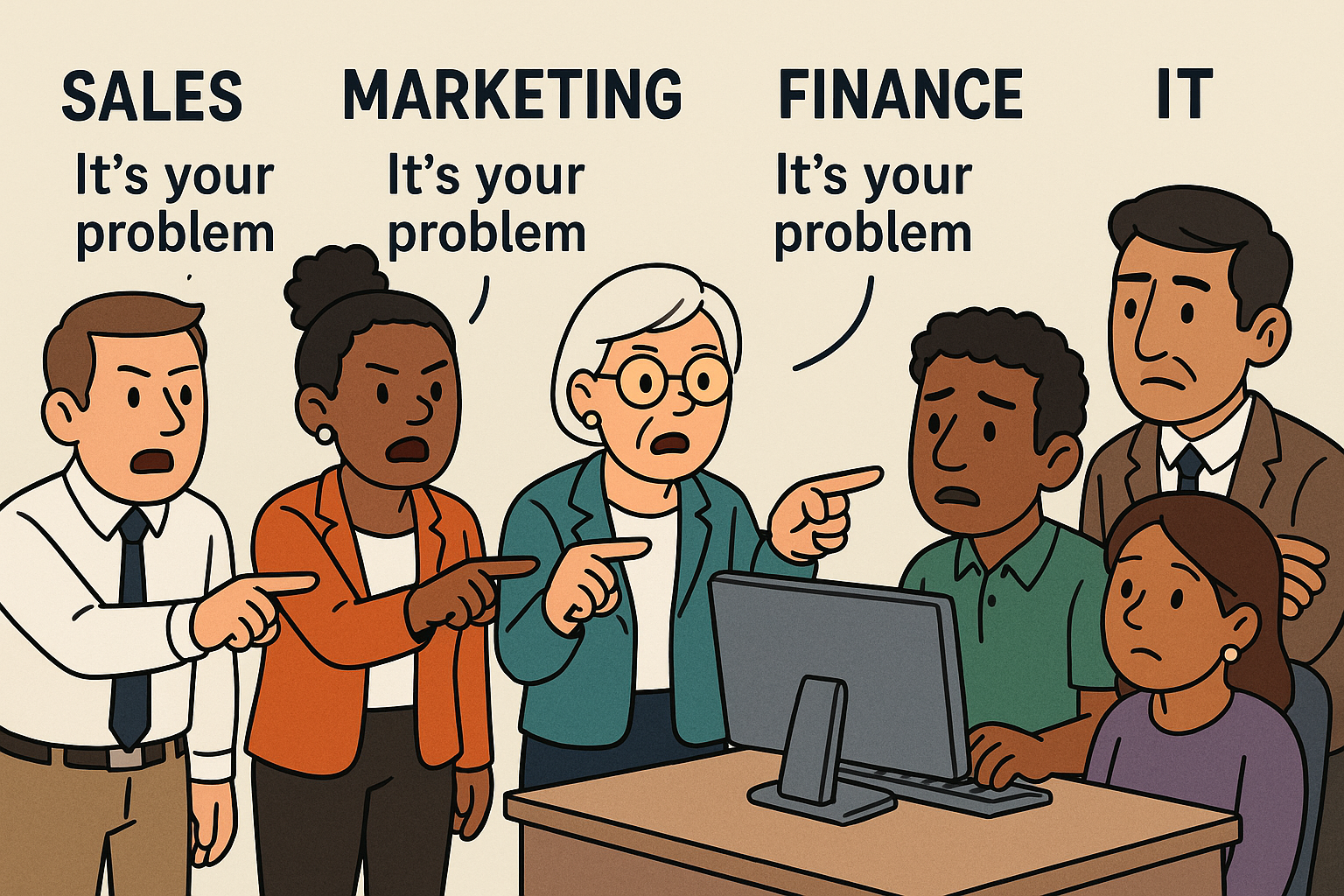
When there is a lack of ownership outside IT for technology-related processes, nobody wins.
ESM is the bridge.
Where IT ends, ESM begins
ESM is the bridge to shared ownership and cross-functional collaboration.
ESM changes everything.
How?
Process ownership remains with business units, enabling IT to provide technical support. Even better, this unified platform approach breaks down departmental silos. The service-oriented thinking replaces technology-focused problem-solving.
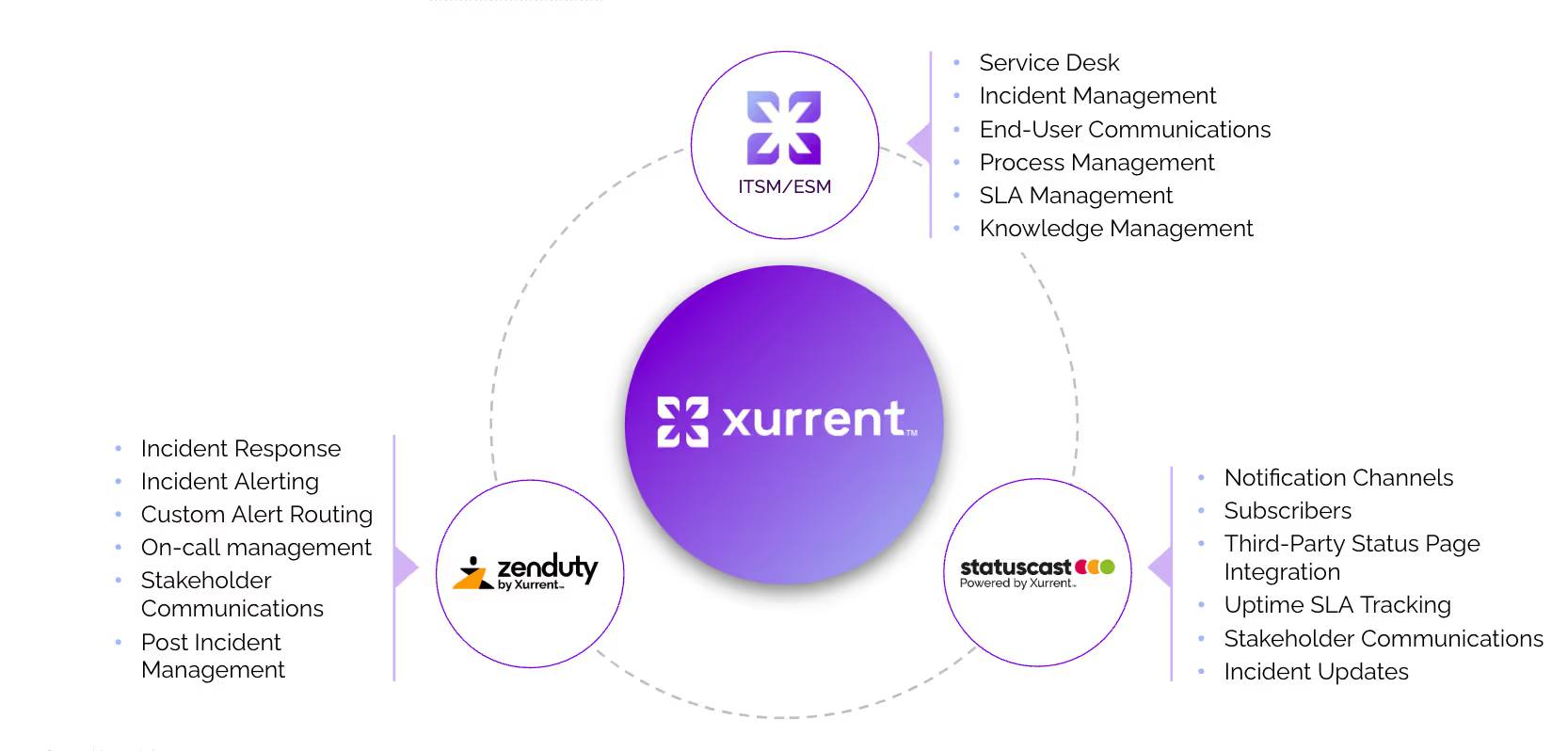
Everyone wins: The organization as a whole, employees, customers — everyone.
Instead of HR calling IT about onboarding delays, ESM enables HR to own the entire employee lifecycle process — from initial paperwork through equipment provisioning — with IT as an integrated partner rather than a service provider.
This shift from IT-centric to ESM-driven service management sounds transformational in theory. But how does it actually work in practice? How do you move from a culture where "everything is IT's problem" to one where departments genuinely share accountability for service outcomes?
The answer lies in understanding that cultural change requires structural change.
You can't simply tell departments to "take more ownership." That top-down approach rarely, if ever, works.
Instead, teams need tools, processes, and frameworks that make shared accountability not just possible, but inevitable.
Successful ESM implementation isn't about adding more technology or creating more processes. It's about redesigning how work flows between departments so that collaboration becomes the most efficient path.
6 ways ESM builds shared accountability
Building a culture of shared accountability doesn't happen overnight, and it certainly doesn't happen by accident. It requires a systematic approach that addresses both the structural and cultural barriers that keep departments working in isolation.
Here are 6 ways to ensure shared accountability:
1. Clear service ownership definitions
Business units own the processes, while IT owns the infrastructure that ensures those processes remain operational.
Example: Marketing owns campaign workflows and defines automation rules, while IT ensures platform availability and reliability. When campaigns fail, Marketing investigates business logic issues while IT handles technical infrastructure problems, thus eliminating blame-shifting between departments.
2. Transparent cross-departmental workflows
Clear visibility into who's responsible for what at each step. This real-time tracking ensures that requests do not fall through the cracks.
Example: New employee onboarding creates a unified workflow touching HR (paperwork), IT (system access), Facilities (workspace setup), and Finance (equipment approval). Each department can see real-time progress and proactively address its portion without waiting for handoffs.
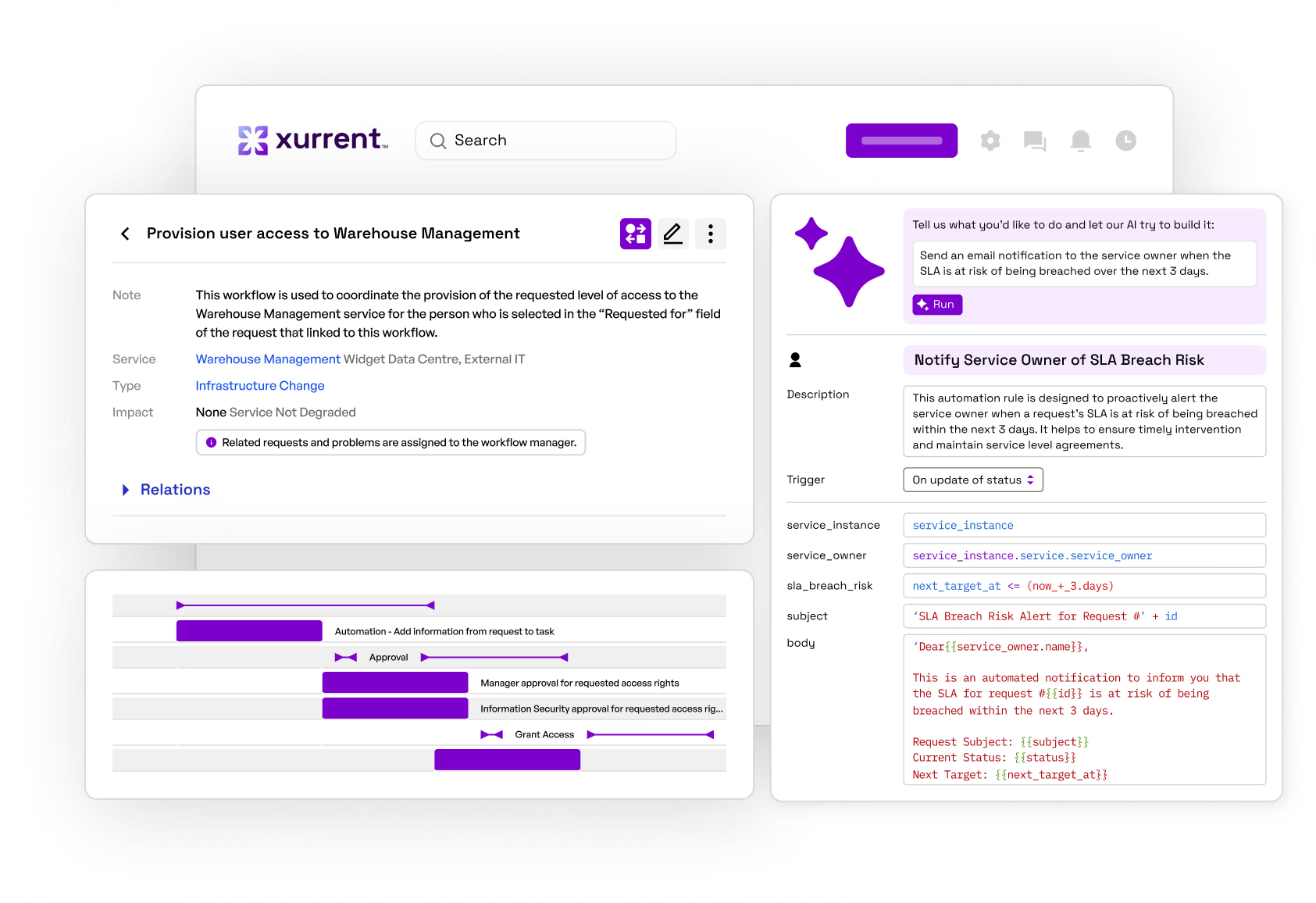
3. Shared service level agreements (SLAs)
Joint accountability for end-to-end service delivery means that SLAs span departments rather than isolating IT. Metrics measure business outcomes, not just technical uptime.
Example: Instead of separate SLAs for "system uptime" and "onboarding completion," a shared SLA measures "time from job offer to fully productive employee." This, in turn, requires HR, IT, Facilities, and Finance to collaborate on the complete business outcome.
Speaking of collaboration …
4. Collaborative problem-solving
ESM platforms that enable real-time collaboration during incidents and perform root cause analysis involving all affected departments are key. This knowledge sharing helps to prevent future occurrences.
Example: When the financial reporting system fails during month-end close, Finance, IT, and Accounting work simultaneously in a shared workspace with real-time visibility, reducing resolution time from hours to minutes.
5. Business process integration
Workflows that automatically route requests to the appropriate owners ultimately reduce manual handoffs.
Example: An expense approval process automatically routes to the employee's manager, then to Finance for policy compliance, and finally to IT for software license validation, if needed — all without requiring manual intervention or emails asking "who handles this next?"
6. Cultural shift through platform design
Self-service capabilities empower departments to solve their own issues, especially when the knowledge base is shared across all departments. Success metrics are tied to business outcomes rather than technical metrics.
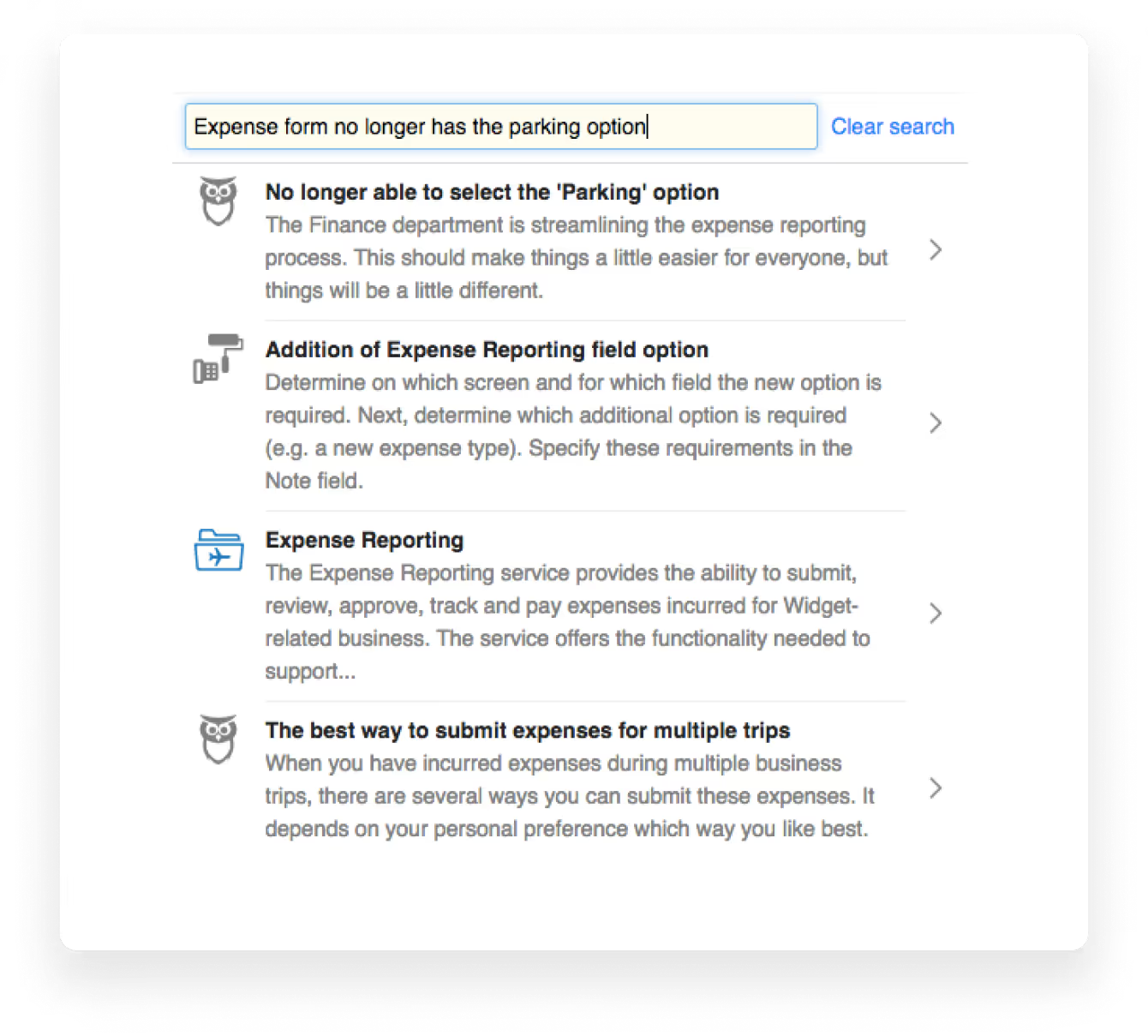
Example: Marketing can update campaign automation rules using a shared knowledge base with guides from Sales, IT, and other teams, with success measured by "campaign launch speed" rather than "ticket resolution time."
These 6 strategies provide the blueprint for shared accountability, but implementing them requires more than good intentions and policy changes. The foundation for this cultural transformation is technology, specifically modern ESM platforms that facilitate collaboration more easily than working in silos.
Here's how the right platform capabilities turn these accountability principles into everyday reality.
How modern ESM platforms enable shared accountability
The answer is a modern ESM platform.
One that has a unified interface across all departments to eliminate tool silos.
One that has a modern self-service portal to create an exceptional user experience.
One that includes automated workflow routing to ensure requests reach the right owners.

One that displays real-time dashboards that provide visibility into cross-departmental performance.
One that embeds integration capabilities to connect existing departmental tools.
Xurrent has it all.
⚡Easy implementation (4-week deployments) reduces resistance to change
⚙️ AI-powered automation reduces manual effort across departments
🧩 Advanced customization allows each department to tailor processes while maintaining integration
📦 Complete platform approach eliminates vendor proliferation
🛡️ Centralized security model with departmental autonomy
📊 Audit trails across all service interactions
🏆 SOC-2 and ISO certifications provide enterprise-grade security
Having the right platform is essential, but how do you measure success? The key is shifting from traditional IT metrics to enterprise-wide collaboration indicators that reflect true shared accountability.
Metrics that matter for shared accountability
When shifting to shared accountability, success metrics must also evolve. The old departmental KPIs — while effective on their own — hinder collaboration in an ESM environment when taken in isolation.
Ticket resolution time AND end-to-end service delivery time.
IT team utilization AND cross-departmental collaboration scores.
System uptime AND business process effectiveness.
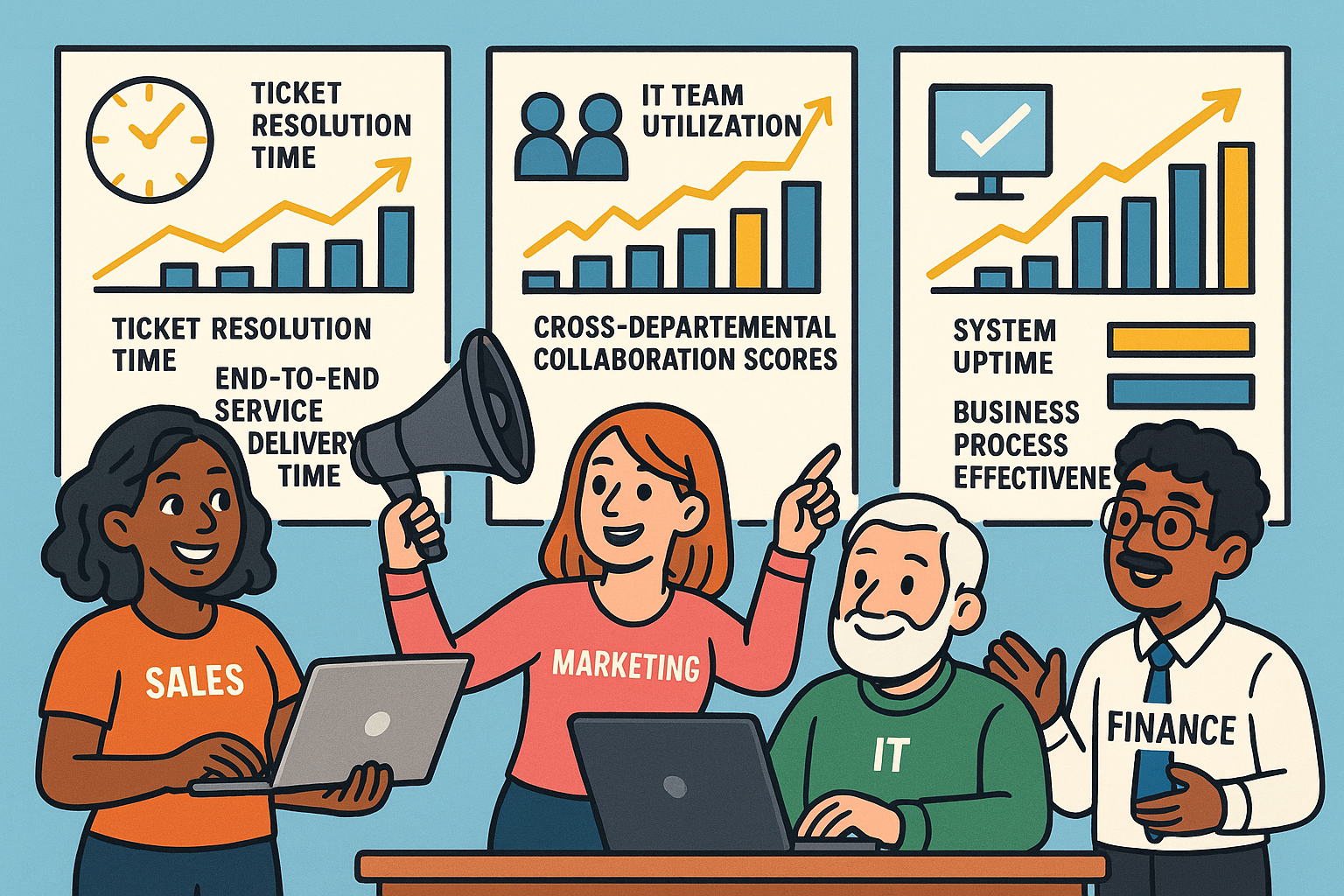
Key performance indicators (KPIs) in a shared accountability environment also change:
✅ Reduction in cross-departmental escalations
✅ Increase in first-contact resolution rates
✅ Employee satisfaction scores across all departments
✅ Time-to-value for new processes and services
These metrics tell the real story of organizational transformation, one where departments measure success by shared outcomes rather than individual performance, and the culture shift becomes undeniable.
The bottom line: ESM isn't just about better service management; it's about fundamentally reimagining how modern organizations work together.
The future of service management is collaborative
ESM doesn't just extend IT practices to other departments — it fundamentally reimagines how organizations deliver services.
When departments share accountability for outcomes rather than pointing fingers at technical problems, the entire organization becomes more agile, efficient, and focused on what matters: delivering value to customers and employees. The transformation from "IT's problem" to "our shared opportunity" represents the evolution from reactive service management to proactive business enablement.
The question isn't whether your organization needs better service management. The question is whether you're ready to break down the silos that are holding you back.
Get started with Xurrent today to discover how our unified platform facilitates seamless cross-departmental collaboration.
FAQs
1. What is Enterprise Service Management (ESM)?
Enterprise Service Management (ESM) extends the principles and practices of IT Service Management (ITSM) beyond the IT department to other areas of the organization. It aims to improve service delivery across the entire enterprise by applying a service-oriented approach to various business functions, establishing shared accountability across departments rather than making everything "IT's problem."
2. What's the difference between ITSM and ESM?
ITSM focuses solely on IT service delivery, while ESM extends service management principles across the entire organization. ESM enables business units to own their processes while IT provides technical support, creating a unified platform approach that breaks down departmental silos and replaces technology-focused problem-solving with service-oriented thinking.
3. Why is IT-centric service management problematic?
IT-centric service management creates organizational bottlenecks because everything becomes "IT's problem." This leads to overwhelmed IT teams handling non-IT service requests, resulting in finger-pointing, departmental silos, poor team morale, reduced productivity, and slower customer resolution times.
4. How does ESM create shared accountability across departments?
ESM fosters shared accountability through six key strategies: clear service ownership definitions, transparent cross-departmental workflows, shared service level agreements (SLAs), collaborative problem-solving, business process integration, and a cultural shift facilitated by platform design that empowers departments with self-service capabilities.
5. What are the benefits of implementing ESM?
ESM benefits include improved organizational agility and efficiency, faster service delivery times, reduced cross-departmental escalations, increased first-contact resolution rates, higher employee satisfaction across all departments, the elimination of departmental silos, and a better focus on delivering value to both customers and employees.
6. How long does ESM implementation typically take?
Modern ESM platforms, such as Xurrent, can be implemented in as little as four weeks, with easy deployment processes designed to reduce resistance to change. The key is choosing platforms with unified interfaces, automated workflow routing, and integration capabilities that connect existing departmental tools.
7. What metrics should organizations track for ESM success?
ESM success should be measured by end-to-end service delivery time (not just ticket resolution), cross-departmental collaboration scores, business process effectiveness, reduction in cross-departmental escalations, increase in first-contact resolution rates, and employee satisfaction scores across all departments.
8. How does ESM handle workflows across multiple departments?
ESM creates transparent cross-departmental workflows with real-time visibility into responsibilities at each step. For example, employee onboarding creates a unified workflow touching HR (paperwork), IT (system access), Facilities (workspace setup), and Finance (equipment approval), with each department seeing real-time progress.
9. What are shared SLAs in ESM?
Shared SLAs in ESM create joint accountability for end-to-end service delivery, spanning departments rather than isolating IT. Instead of separate SLAs for technical uptime and process completion, shared SLAs measure complete business outcomes, requiring multiple departments to collaborate on the entire service delivery process.
10. How does an ESM platform design facilitate cultural change?
ESM platforms facilitate cultural change by providing self-service capabilities that empower departments to solve their own issues, shared knowledge bases across all departments, unified interfaces that eliminate tool silos, automated workflow routing, and real-time dashboards that provide visibility into cross-departmental performance and collaboration.
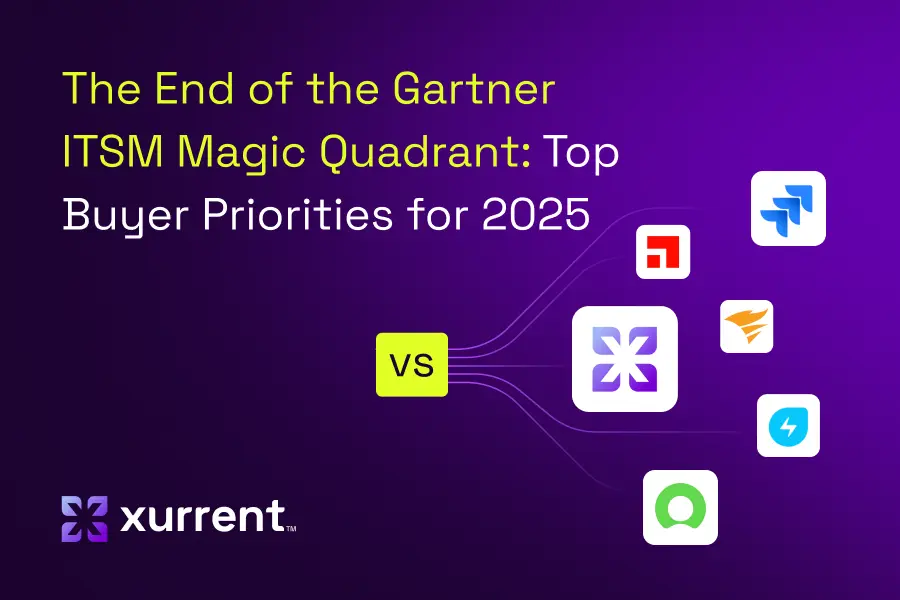

Xurrent named a Market Leader in Research In Action’s Vendor Selection Matrix™ for IT & Enterprise Service Management Solutions
Xurrent earns #1 rankings in customer satisfaction, price vs value, and recommendation index in Research In Action's global ITSM/ESM Vendor Selection Matrix report.


